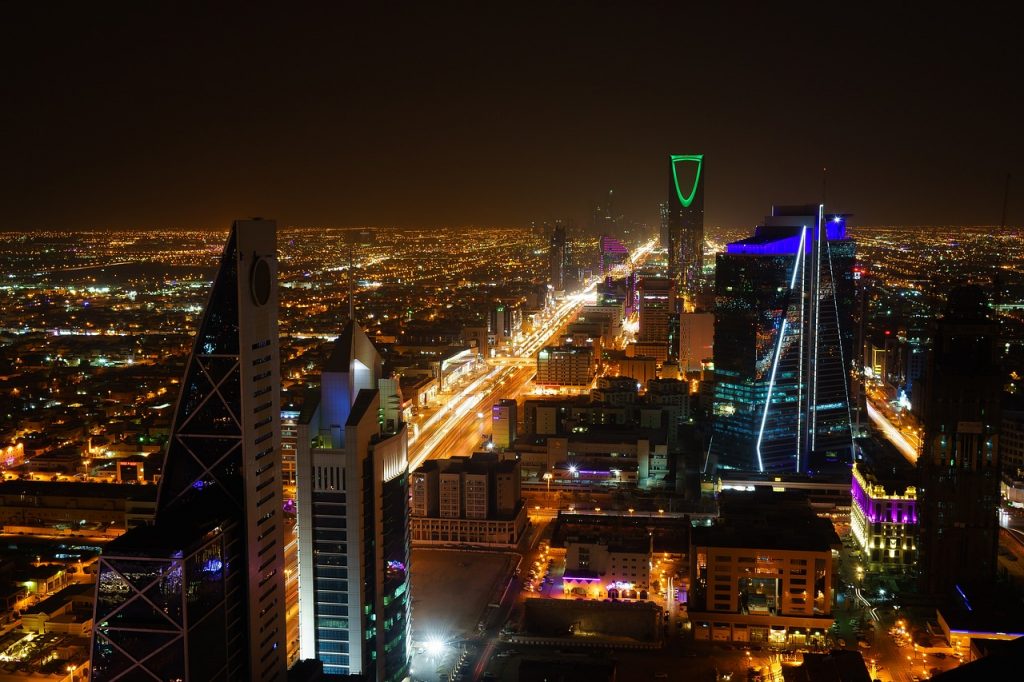Understanding Riyadh’s Unique Climate
Riyadh, the capital of Saudi Arabia, is renowned for its distinctive desert climate. Located in the heart of the Arabian Peninsula, this city experiences an extreme subtropical desert environment, classified as BWh under the Köppen climate classification. What does this mean for residents and visitors? How do the dramatic temperature shifts and minimal rainfall impact daily life? Let’s delve into the nuances of Riyadh’s climate and discover the best and worst times to visit this fascinating city.
Extreme Heat and Sparse Rain: The Hallmarks of Riyadh’s Climate
Monthly Weather Averages: A Year in Riyadh
Riyadh’s weather is characterized by high temperatures and minimal rainfall. From May to August, temperatures soar, averaging from 39.4°C (102.9°F) to a peak of 43.6°C (110.5°F). Conversely, the coolest months—December to February—see temperatures drop to between 20.2°C (68.4°F) and 9°C (48.2°F). Rainfall is scarce, with most months receiving little to no precipitation. However, December, January, and February offer slightly higher rainfall, ranging from 12mm (0.47″) to 15mm (0.59″). This extreme variation makes Riyadh’s climate both unique and challenging.
Best Time to Visit Riyadh
For those planning a trip to Riyadh, timing is crucial. The period from November to March is ideal, offering relatively milder temperatures. Daytime temperatures range from a high of 27.8°C (82°F) in November to 20.2°C (68.4°F) in January. Evenings are cooler, providing a comfortable respite from the daytime heat. This period also coincides with the city’s modest rainfall, creating a softer ambiance that enhances the experience of exploring Riyadh.

Visiting Riyadh in Summer? We’ve Got You Covered!
Visitors avoid Riyadh from May to July, when temperatures exceed 40°C (104°F) and peak at 43.6°C (110.5°F). The UV index is exceptionally high, making outdoor activities uncomfortable and potentially hazardous. Despite the long daylight hours, the intense heat and blazing sun make this period less than ideal for sightseeing and outdoor adventures.
However, we have a solution for you! With our top-notch energy-efficient air conditioners, you can stay cool and comfortable indoors. No need to go anywhere—experience the best of Riyadh in a cool, relaxing environment.
Seasonal Weather Patterns: A Closer Look
Spring in Riyadh: A Rapid Transition
Spring in Riyadh spans from March to May, marked by a swift increase in temperatures. March starts with a high average of 27.7°C (81.9°F), but by May, temperatures often exceed 39.4°C (102.9°F). Rainfall remains low, and relative humidity drops from 32% in March to just 17% by May. Despite the rising temperatures, spring offers plenty of sunshine, with daylight hours increasing from 12.7 hours in March to 13.3 hours in May.
Summer in Riyadh: Scorching and Arid
Summer, from June to August, is synonymous with extreme heat. Temperatures can reach a blistering 43.6°C (110.5°F), and rainfall is virtually nonexistent. The relative humidity remains low, averaging 11-12%, while daylight hours peak at around 13.7 hours. This period is characterized by relentless sunshine and intense heat, challenging both residents and visitors.
Autumn in Riyadh: Gradual Cooling
Autumn, from September to November, brings a gradual decline in temperatures. September begins with highs averaging 40.4°C (104.7°F), but by November, temperatures drop to a more comfortable 27.8°C (82°F). Rainfall remains sparse, and daylight hours decrease, averaging 11 hours in November. This season marks a transition from the intense summer heat to the milder winter months.
Winter in Riyadh: Mild and Breezy
Winter, from December to February, offers the mildest temperatures of the year. Daily highs range from 22.2°C (72°F) to 20.2°C (68.4°F), with lows dipping to 9°C (48.2°F) in January. This season also brings the most rainfall, peaking at 15mm (0.59″) in January. Daylight hours are shorter, with December and January featuring around 10.6 hours of light. Winter provides a welcome relief from the scorching summer months, making it an appealing time for visitors.

Month-by-Month Breakdown
Riyadh’s Weather in Detail
- January Mild and Moderate
With temperatures ranging from 9°C (48.2°F) to 20.2°C (68.4°F), January offers mild weather. Daylight hours are shorter, averaging 10.8 hours, which may limit outdoor activities but provides a break from the intense sun. - February Slight Warm-Up
February sees a slight increase in temperatures, with lows at 11.2°C (52.2°F) and highs reaching 23.4°C (74.1°F). Longer sunshine duration makes it a great time for outdoor enjoyment. - March: Warming Up
March brings hotter conditions, with temperatures reaching up to 27.7°C (81.9°F). The city enjoys around 12 hours of daylight, making it perfect for extended outdoor activities. - April: Increasing Heat
April’s temperatures climb to a high of 33.4°C (92.1°F), signaling the approach of summer. With a UV index of 12, sun protection becomes crucial. - May: Entrance to Summer
May sees temperatures soaring to 39.4°C (102.9°F). The extended daylight hours and intense UV index make it a challenging month for outdoor activities. - June: Peak Summer Heat
June brings the full force of summer, with temperatures peaking at 42.5°C (108.5°F). The high UV index and prolonged sunshine make this month particularly harsh. - July: Extreme Heat Continues
July is characterized by unrelenting heat, with average temperatures peaking at 43.5°C (110.3°F). The city’s arid environment is in full effect. - August: Unyielding Heat
August perpetuates the intense heatwave, with temperatures peaking at 43.6°C (110.5°F). The prolonged sunshine and high UV index maintain the sweltering conditions. - September: Gradual Cooling
September brings relief with temperatures decreasing to a high of 40.4°C (104.7°F). The beginning of autumn signals a transition to milder weather. - October: More Comfortable
October showcases highs reducing to 35.3°C (95.5°F). The receding heat and lower UV index indicate the retreat of summer. - November: Milder Days
November sees temperatures dropping to a manageable high of 27.8°C (82°F). The climate becomes more conducive for outdoor activities. - December: Cooler Weather
December features traditional winter weather with temperatures between 10.6°C (51.1°F) and 22.2°C (72°F). Shorter daylight hours and a low UV index characterize the transition into the coldest period of the year.
Whether you’re a resident or a visitor, staying cool and comfortable in Riyadh’s extreme climate is essential. As your trusted air conditioner supplier, we offer a range of high-quality air conditioning solutions to help you beat the heat and enjoy your time in this vibrant city. Contact us today for all your air conditioning needs and experience the best in cooling technology!


